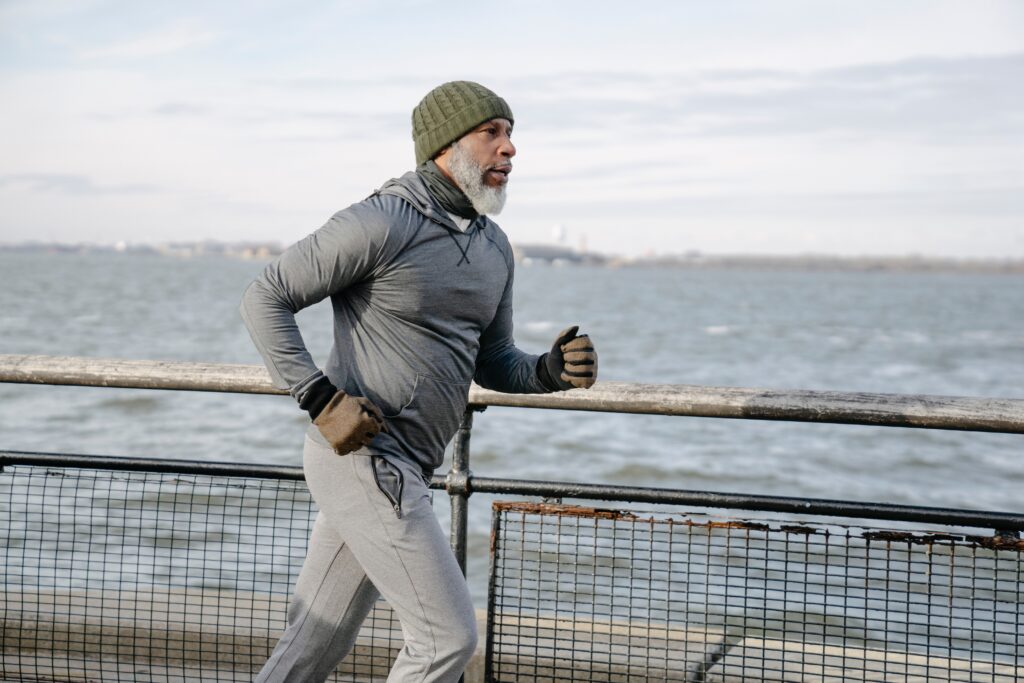Stay Fit, Not Frail

Here is a truth we all must accept: as the years roll by, our bodies go through inevitable transformations that can affect our approach to physical activity.
Exercise plays a significant role in our fight for maintaining overall health, managing weight, and reducing the risk of chronic diseases such as heart disease and diabetes. It also enhances mobility, uplifts our moods, and promotes better sleep.
So, it’s important that we learn to tailor our activity and exercise routines to accommodate these changes.
If you are an older adult looking to stay active and healthy, consider these four fitness components:
1. Cardiovascular Health

Regularly engaging in moderate-intensity aerobic activities like walking, swimming, or cycling can boost your heart health. Aim for at least 150 minutes per week, which can be broken down into manageable 30-minute sessions over five days
2. Strength Training
Combat age-related muscle mass decrease with strength training exercises. Consider incorporating lifting weights or using resistance bands into your routine at least two days a week.
3. Balance & Flexibility
As we age, maintaining balance and flexibility is vital to prevent falls and sustain mobility. Try incorporating activities like yoga, tai chi, or simple stretching routines into your regimen.
4. Bone Strength
Aging, especially for post-menopausal women, increases the risk of osteoporosis. Weight-bearing exercises like walking, climbing stairs, or dancing can help maintain bone health.
Before embarking on a new exercise routine, consult a healthcare provider, particularly if you have chronic conditions, injuries, or other health considerations.
It could be argued that exercise becomes even more critical as we age. The key is to choose activities you enjoy, as this increases the likelihood of maintaining an active lifestyle.
Here are some reasons why:

- Maintaining Muscle Mass: As we age, we gradually lose muscle. Regular physical activity, particularly strength training, can help to slow this process, maintain muscle strength, and reduce the risk of frailty and falls.
- Maintaining Bone Health: The risk of developing osteoporosis increases with age. Weight-bearing exercises, like walking or strength training, can help to maintain bone density and reduce this risk.
- Avoiding Chronic Diseases: Regular exercise can help manage many chronic diseases that become more common as we age, such as heart disease, diabetes, and arthritis. Physical activity can also boost the immune system, which often weakens with age.
- Preserving/Improving Mental Health: Exercise has been shown to reduce symptoms of depression and anxiety at all ages, but it may be particularly beneficial for older adults who may be dealing with the loss of loved ones, retirement, or other major life changes.
- Mobility and Independence: Regular physical activity can help older adults maintain their ability to live independently. Exercise improves strength, flexibility, and balance, all of which are crucial for activities of daily living, like carrying groceries, climbing stairs, and preventing falls.
- Longevity: Regular exercise is associated with a reduced risk of premature death. In essence, staying active can contribute to a longer life.
Indeed, as we age, the need for exercise doesn’t wane; instead, the type and intensity of the exercise we engage in may need to evolve. Remember, any changes to your exercise routine should be discussed with a healthcare provider.